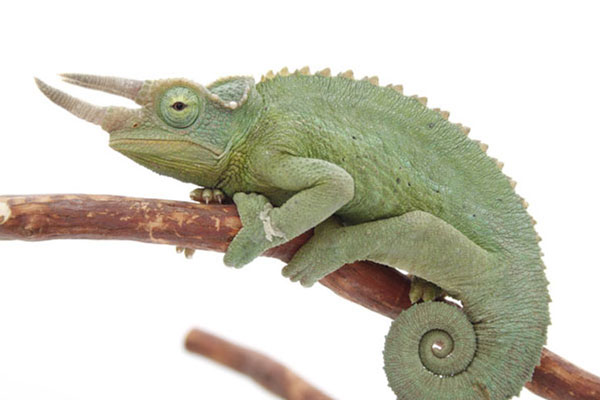Plan ahead and give your new reptile the right environment to thrive.
Starting out with a new reptile pet is both exciting and fascinating, but it can sometimes be a little stressful too. There’s a lot to learn and there is often a worry that you could be missing something important or making a beginner’s mistake. You can keep most of these worries at bay by reading about your pet beforehand and by following advice from the breeder or pet store where you bought the animal. Learning about your new pet is part of the fun, and there are plenty of places to look for information, including right here on REPTILESMagazine.com.
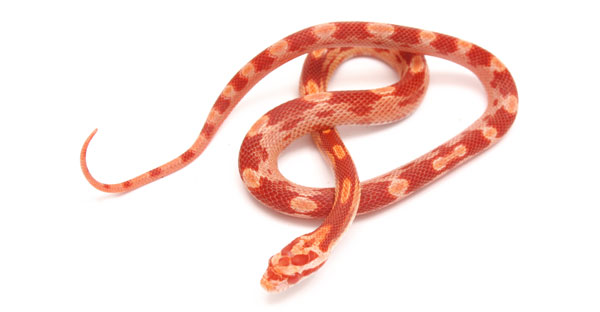
Photo by Gina Cioli/I-5 Studio
Corn snakes are great beginner pets, but they still require you to research their needs first.
Best Practices
The key to good reptilekeeping is to make sure that basic husbandry practices are in place and being consistent. After that, the rest is fine tuning. This checklist runs through the important reptile care needs and it’s a great way to reassure yourself that you have the basics in place. By checking through each section, you can spot small problems before they become big ones. Don’t beat yourself up if the checklist highlights something that needs attention. Even the most experienced herpers make occasional mistakes. Finding and fixing problems early is the sign of a good reptilekeeper.
The Checklist
Of course, not all reptiles are the same and care differs according to a species’ specific needs. This checklist uses generic questions to guide attention to the important aspects of reptile husbandry. It might be worth going through the list with a more experienced keeper for the first few times, so that the experienced keeper can highlight the species-specific considerations you should look at in each section.
Temperature
Temperature is the one of the most important aspects of reptile husbandry. Being able to control, manage and monitor the temperatures within your animal’s enclosure is vital. The natural habitat and behavior your reptile species will determine the specific husbandry requirements you will need to observe.
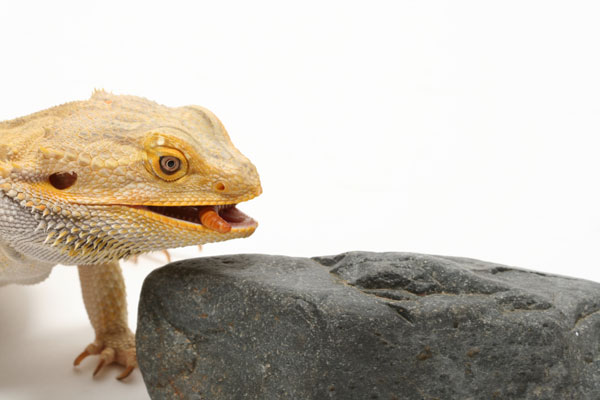
Photo by Gina Cioli/I-5 Studio
Bearded dragons are engaging and easy to care for as long as their enclosure offers them the heat gradient they require to digest their food properly.
Does the heating system within your enclosure provide a thermal gradient?
Reptiles need access to a range of temperatures, and your enclosure should feature a selection of warm and cool areas across a broad range. This is normally achieved by installing the heater at one end of the vivarium.
Is there a suitable basking area provided?
Not all reptiles bask in the same way. Arboreal reptiles like a perch somewhere high up in their enclosure to bask near a heat source above them, whereas some need to get heat while still on the ground. Most turtles need to be able to leave the water and bask on land. Does your animal have access to the right kind of basking?
Can the inhabitant retreat to a cool area within its enclosure?
Providing a temperature gradient will usually ensure that a cool area is available, but keepers should be on the lookout for changes. Thermostat malfunctions or household room heaters can cause problems. Enclosures with mercury vapor ultraviolet lamps need special attention, too, as these give off lots of heat. This can catch keepers unaware as spring and summer arrive, bringing warmer ambient temperatures.
Is a selection of shelters available along the entire temperature gradient range within the enclosure?
Limiting stress is another important aspect of reptile husbandry, and providing adequate shelters and hides is the key to achieving this. Most stores sell an impressive selection of aesthetically pleasing hides and shelters, along with various types of artificial plants and foliage, but you could use real ones if that is appropriate. Cork bark is another popular shelter option and some reptiles like to burrow into a deep layer of their preferred substrate. Some keepers even bury tubes into the substrate at angles for their pet to use. Whatever you use for shelters, they should be available along the entire temperature range of the vivarium, so that the animal does not have to choose between shelter and heat. Arboreal species will probably not use hides placed at ground level, so be sure to provide cover for these animals, too.
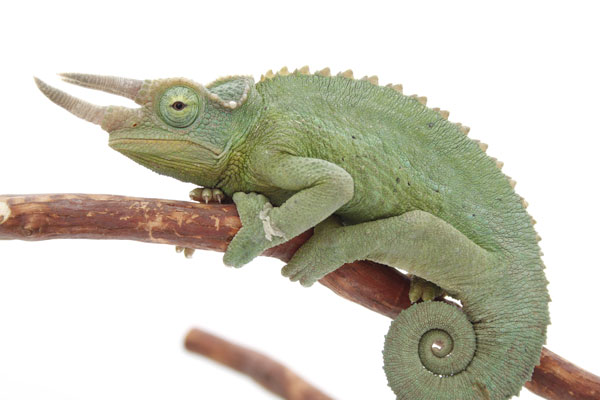
Photo by Gina Cioli/I-5 Studio
Chameleons, like this Jackson's chameleon, require an enclosure that has a good deal of ventilation but also can meet their humidity requirements. This often means a more expensive setup.
Is the heater controlled by a suitable thermostat?
While it is possible to create a vivarium that does not need a thermostat, it is not a recommended practice for beginners. A thermostat will enable the keeper to control temperatures, providing peace of mind and protection against most temperature-related mishaps.
Is the inhabitant safe from sustaining immediate burns from the heat source?
Bulbs, ceramics and even some sources of UV light can inflict burns. Mesh guards are available to shield the reptile from the heat source and are a sound safety investment.
Can the keeper check and monitor the temperatures within the enclosure?
Several thermometer types are available, including dials, digital and mercury. One thermometer is a minimum standard requirement, but two or three are preferable. Checking temperatures in several areas of the temperature gradient is easier with several thermometers, as moving one around the tank and waiting for a reading is time consuming. For quick and easy temperature testing at multiple sites, consider an infrared temperature gun. While more expensive than conventional thermometers, these units give instantaneous and accurate temperature readouts at the touch of a button.
Reptile Enclosures and Décor
The days of adapting old fish tanks to use for reptiles is almost behind us as more appropriate and sophisticated vivarium designs are readily available. A suitable enclosure fitted with the right features, furniture and equipment is the foundation of good reptile husbandry.
Is the enclosure a suitable size for the inhabitant and for the next six months of growth?
A starter kit is suitable for hatchling reptiles, but these animals soon grow and require a larger, more permanent setup. Similarly, a large vivarium is not appropriate for small or hatchling animals.
Is the enclosure escape proof?
The risk of escape is a major hazard for pet reptiles. Installing access for electrical wiring can often compromise security, making holes that appear too small for an escape until the reptile proves otherwise. Poorly fitted sliding glass doors are another common fault, and the correct sizes of glass and runner are imperative. Also, check that the runner has not become fouled with substrate, as this can stop the glass from closing fully, thus leaving means of escape. Ventilation mesh and fixings have a habit of becoming detached and should be checked regularly. Weighted lids (usually found on adapted fish tank setups) are rarely effective and hardly acceptable when purpose-built alternatives are available.
Is the enclosure secure against accidental opening by the inhabitant or unwitting humans?
Unsecured sliding glass doors can be accidentally opened by people brushing past, curious children and sometimes by the enclosure inhabitants themselves. A locking mechanism that only fixes when the door is fully closed is the best remedy for this problem.
Is the enclosure suitably ventilated?
Ventilation should not be blocked or covered.
Is the enclosure easy to access and maintain?
An accessible vivarium is no chore to maintain and manage. It should be located at a workable height with enough clear space to allow easy access for daily maintenance.
Is the enclosure located in a safe and appropriate place?
Direct sunlight can cause dangerous temperature fluctuations. A vivarium can work just fine during the cooler months, only to become dangerously hot when the warmer seasons arrive. Another concern is selecting a location that does not have a great deal of disruptive stress caused by small children, loud music and other pets.
Husbandry and Maintenance
Consistency is the key to good husbandry. Adding species-specific maintenance points to this part of the list is advised.
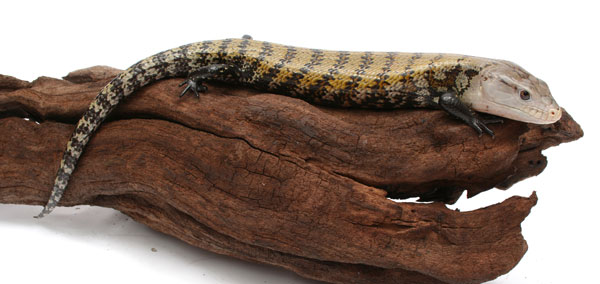
Photo by Gina Cioli/I-5 Studio
This blue-tongued skink will need a stable basking spot and a quality basking lamp and ultraviolet lighting.
Does the keeper have a record of feeding and other noteworthy events?
Keeping notes provides an invaluable history. This can serve to structure your husbandry schedule and help pinpoint the cause and effect of any problems that may arise.
Do you clean the substrate and glass regularly?
These two points are the benchmark for good husbandry. Soiled substrate is unacceptable and a zero tolerance protocol should be in place with faeces being removed on sight.
Is the water bowl cleaned appropriately?
Water and waterbowls are a major cause of disease transmission and should be disinfected regularly. Slime, mould and lime-scale are indicators of poor husbandry.
Does the keeper have a suitable transportation container?
A pillowcase sealed with knots or tape and placed inside a padded and ventilated hard-shell container will be ideal in most cases. Drawstrings and elastics are rarely effective methods to seal a snake bag. Be sure to punch plenty of small ventilation holes into the hard container before you put the reptile inside.
Does the keeper have a suitable holding container for use when cleaning?
Most keepers use a ventilated and lockable plastic bin of an appropriate size. Be sure to clean and disinfect the bin between uses.
Safety
Vivariums can pose a hazard if they are not properly installed and maintained. The safety of both the keeper and the pet is paramount.
Are electrical wiring, heating and furnishings safe and correctly fitted?
Fire and electrocution are very serious risks. If in doubt, ask a professional.
Is a smoke alarm fitted in the room where the enclosure is positioned?
Every room housing a vivarium should also feature a fire alarm.
Does the glass fit snugly and have smooth edges?
Glass should have polished edges and fit snugly into runners or fixings.
Does the keeper have emergency contact details for a specialist vet?
This information is ideally kept next to the vivarium. If you do not have a vet, look for one near you by visiting arav.com.
Food and Water
Reptiles consume food and water in a variety of ways, and it is important that both are provided in a way that is safe, effective and appropriate for the species.
Is water provided by suitable means?
Most pet snakes will drink directly from a water bowl, whereas some lizards prefer to drink droplets of water from a sprayer or a dripper system.
Has the keeper negated any risk of drowning?
Small lizards and chameleons are particularly at risk here. A smooth-sided water bowl or a drip catcher can present a risk for lizards that do not experience pools of water in their natural habitat. Animals that are not particularly agile, such as chameleons or skinks, are also at risk.
Is the risk of water bowl fouling by live food contamination negated?
Bugs will invariably find a way to drown in a water bowl unless a means of escape is provided. Some keepers use floating rafts, some use a half-submerged rock, while others use filter wool to allow escape for suicidal bugs.
Is fresh water offered regularly?
Ideally, water bowls would be changed routinely every day, allowing for an occasional day or two of lapse when absolutely necessary. Animals requiring spray or dripper methods should be watered at least once every day and preferably more if possible.
Is the substrate and enclosure protected from water contamination?
Spilled water can cause mould, produce excess humidity and destroy vivarium wood. The most common culprit is an overfilled water bowl that gets spilt each time your pet goes for a dip. Drippers and sprayers are another cause, and excess water needs to be somehow collected to avoid these problems.
Is appropriate, nutritious food offered at regular intervals?
Most snakes will eat rodents of a similar girth to their own bodies at intervals of every four to seven days. Watch out for overfeeding, as this will make your snake fat. Fat snakes look creased and some even have bulbous deposits of fat along their body.
Lizard feeding is more varied, but most will eat bugs of a suitable size. These may require gut loading and will probably need supplement dusting of some type. It is not acceptable to feed bugs straight from the tub.
Pay particular attention to the diet of herbivorous lizards, and select a diet that is appropriate for that species.
In Summary
This reptile checklist is intended for new and novice keepers only. There are many circumstances and applications where enforcing these principles would not be appropriate. Expert and experienced keepers will know when it is safe to bend or break these guidelines. Safe and effective husbandry is always the responsibility of the keeper. New keepers will require more guidance than experienced herpers, who may have specialist or advanced husbandry skills. It is not designed for advanced applications.
Tony Jones lives in the United Kingdom and has worked with reptiles for more than 25 years, with a career spanning retail, wholesale, live food breeding, zoological collections, large-scale captive-breeding projects, venomous collections, expeditions and field work, conservation, ecology and journalism. He is a specialist advisor to the UK’s Pet Education Trust and Head of Communications for EUARK (European Union Association of Reptile Keepers ) and FBH (Federation of British Herpetologists).

